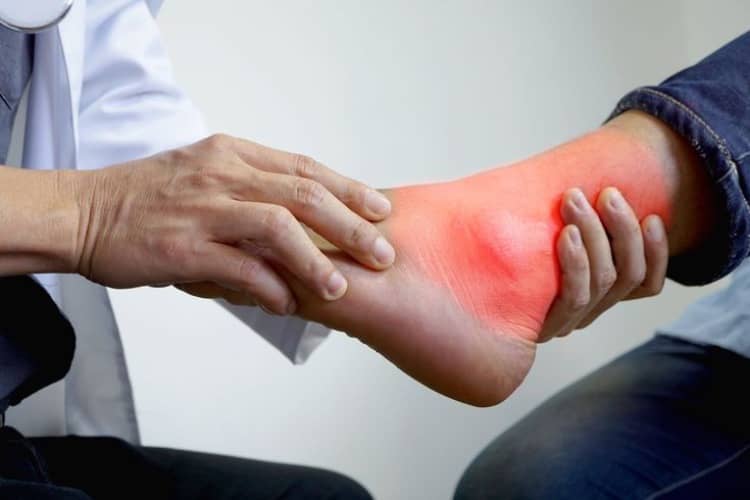Everything You Need to Know About Chronic Bone Spur Pain
When it comes to musculoskeletal issues, bone spurs can be a common but often misunderstood problem. These bony growths, also known as osteophytes, can cause a range of symptoms and discomfort. In this comprehensive guide, we’ll cover everything you need to know about bone spurs, including their definition, types, causes, symptoms, treatment options, and the importance of seeking professional care.
What Are Bone Spurs?
Bone spurs are abnormal outgrowths of bone that can develop on the edges of existing bones. These growths typically form in response to the body’s attempt to repair or protect itself. While bone spurs themselves are generally painless, they can lead to discomfort and complications when they impinge on nearby structures, such as tendons, ligaments, or nerves.
Types of Bone Spurs
Bone spurs can develop in various parts of the body. The most common types include:
1. Spinal Bone Spurs (Osteophytes)
Spinal bone spurs form along the vertebrae of the spine and are often associated with conditions like osteoarthritis and spinal stenosis.
2. Heel Spurs
Heel spurs are located on the underside of the heel bone and are often linked to plantar fasciitis, a condition characterized by inflammation of the tissue connecting the heel bone to the toes.
3. Shoulder Spurs
Shoulder spurs can develop on the bones of the shoulder joint and may lead to rotator cuff injuries and impingement syndrome.

4. Hip Spurs
5. Knee Spurs
Knee spurs are typically associated with osteoarthritis and may lead to pain and limited mobility in the knee joint.
Common Causes of Bone Spurs
Several factors can contribute to the development of bone spurs. The most prevalent causes include:
1. Aging
As we age, the body’s natural ability to maintain and repair itself decreases, making bone spurs more likely to develop over time.
2. Osteoarthritis
Osteoarthritis, a degenerative joint disease, is a significant contributor to the formation of bone spurs. The condition causes the breakdown of cartilage in the joints, leading to the body’s attempt to repair the damage with bone growth.
3. Injuries
Trauma or repetitive stress injuries to a joint can trigger the formation of bone spurs as the body tries to heal itself.
4. Poor Posture
Chronic poor posture can lead to the development of bone spurs, especially in the spine.
Symptoms of Bone Spurs
The symptoms of bone spurs can vary depending on their location and size. Common signs include:
- Pain or tenderness at the site of the spur
- Reduced range of motion in the affected joint
- Numbness or tingling sensations if a nerve is compressed
- Swelling and inflammation
- Difficulty performing everyday activities
Treatment Options for Bone Spurs
The treatment of bone spurs typically depends on the severity of symptoms and their impact on daily life. Both non-surgical and surgical options are available.
Non-Surgical Treatment:
- Medications: Over-the-counter pain relievers or prescription medications, such as nonsteroidal anti-inflammatory drugs (NSAIDs), can help manage pain and reduce inflammation associated with bone spurs.
- Physical Therapy: Physical therapy can be beneficial in improving joint flexibility, strength, and range of motion. Specific exercises can help alleviate symptoms and prevent further complications.
- Orthotic Devices: Heel cups or shoe inserts may be recommended for heel spurs to provide cushioning and support to the affected area.
- Corticosteroid Injections: In some cases, corticosteroid injections can provide temporary relief by reducing inflammation and pain in the affected joint.
Surgical Treatment:
- Removal of the Spur: Surgical removal of the bone spur may be necessary if it is causing severe pain, impeding joint movement, or pressing on nerves or blood vessels. This procedure is often performed arthroscopically, with minimal invasiveness.
- Joint Repair or Replacement: In cases where bone spurs are associated with advanced osteoarthritis or joint damage, joint repair or replacement surgery may be recommended.
Consequences of Untreated Bone Spurs
If left untreated, bone spurs can lead to chronic pain and further joint damage. The consequences of untreated bone spurs may include:
- Increased pain and discomfort
- Decreased mobility and joint function
- Nerve compression, leading to numbness and weakness
- Progression of joint diseases, such as osteoarthritis
Seek Professional Care for Chronic Bone Spur Pain at Southeast Regional Pain Center
If you suspect you have bone spurs or are experiencing symptoms of joint pain, it’s essential to seek professional care promptly. Delaying treatment can lead to more severe complications and chronic pain.
At Southeast Regional Pain Center, we specialize in providing comprehensive pain management solutions. Dr. Kenneth Barngrover, our esteemed expert, has extensive experience in diagnosing and treating joint pain, including bone spur pain. With our patient-centered approach and commitment to your well-being, we ensure you receive the highest quality care.
Taking the Next Step
To address your bone spurs and find relief from joint pain, we recommend obtaining a referral from your primary care physician or orthopedic specialist. This referral ensures that your treatment plan is tailored to your specific needs and coordinated effectively.
To schedule an appointment with Dr. Kenneth Barngrover at Southeast Regional Pain Center, please call us at (706) 571-7246. Our dedicated team is here to provide you with the support and treatment you need to regain control of your life and overcome joint pain.
Don’t let bone spurs limit your daily activities and quality of life any longer. Reach out to Southeast Regional Pain Center today and take the first step toward a pain-free future.